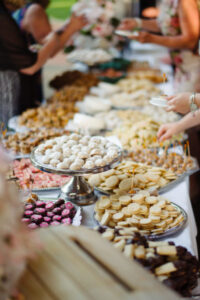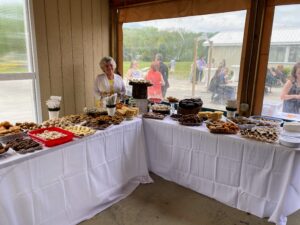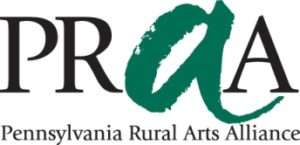Cookie Table: An Edible History

It’s wedding season! Well, at least, it’s that time of year where it seems like everyone has a wedding to attend. In the rust belt region, and particularly in South Western PA, that means it’s also cookie table season.
So, what is a cookie table, you say? The name really says it all – a table full of cookies! But to our region, it’s so much more. Traditionally, friends and family of the bride and groom prepare these cookies. The baking process takes place in the months leading up to the big day, allowing bakers to prepare and freeze the sweets. Often, the goal of the cookie table is to have many left uneaten, which are then taken home by wedding guests as a gift. Typically, hundreds (even thousands!) of dozens of cookies end up on display during the big day, and a variety of ethnic cookies make an appearance.

Each variety of cookie that appears has a deeper significance than just providing guests another dessert option in addition to cake. These are often family recipes that have been passed down through generations, and are cookies that will honor the bride or groom’s ethnic background. Italian biscotti or pizzelles or Polish kolaches are often seen, as well as American classics, like chocolate chips and snickerdoodle. There are also the unique-to-Western PA cookies, like thumbprints, buckeyes, and peanut butter blossoms. To locals, the cookie table is such a strong tradition that the day just wouldn’t seem complete without it.

Rooted deep in history, the Wedding Cookie Table has strong ethnic and religious ties, linked mainly to European immigrants of Catholic descent – particularly present in industrial areas that housed Italians, Greeks, and other Europeans. In the past, this tradition could have been used as a way to preserve ethnic foodways for immigrant families. Although the beginnings of the Cookie Table is debatable, it is believed that this sweet sensation was a necessity among immigrant families who faced financial hardships. Instead of purchasing or making a cake, which was an expensive endeavor, many family members would instead bring cookies to share to help offset the costs. These cookies also reminded these immigrant families of home, and served as a form of reflection and honor. Today, having a cookie table serves as a way for newly established couples to claim their regional identity within Western PA, as well as celebrate their ethnic heritage.
Aside from keeping the tradition alive, the Wedding Cookie Table gives family and loved ones the opportunity to show their love and adoration for the newlyweds through working with their hands. The baker carefully selects each cookie and takes great pride in their confections. Keeping the bride and groom in mind, the baker elicits a message, often of wellbeing or of a happy memory. Either way, each person is baking with love and pride for their loved one, and those feelings manifest into a variety of sweet, sweet treats.
This year, if you are attending a wedding that has a Cookie Table, take time to notice the desserts that are there. They very well could be carrying decades of history within them!
Recent News
- “Ways of Wood” Exhibition at The Artists Hand August 29, 2024
- Creative Health Impact Grant Open for the 2024-2025 Year April 22, 2024
- Folkway Feature – Meet the Artist Joe Grkman Jr. March 12, 2024
- Opportunities in the Arts Event December 1, 2023
- Quilting: A Strong-Held Tradition in Armstrong County September 8, 2023
